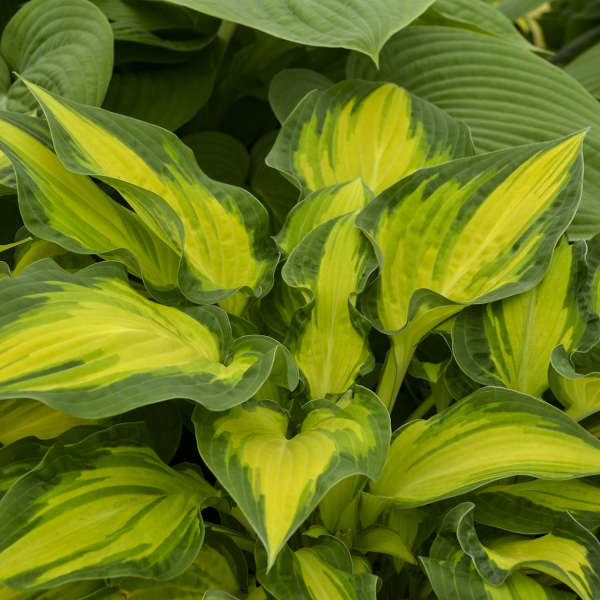Hosta 'Happy Dayz'
Hosta 'Happy Dayz'
Mature Height: 18 inches
Mature Spread: 28 inches
Couldn't load pickup availability
Shipping
This brightly colored hosta has yet to “Jump the Shark”. Yellow and blue/green variegation makes for an excellent display of color and variety. As the season progresses the yellow shades mellow to a creamy yellow and allow this hosta to provide a show in the spring and blend in more subtly in the late spring to early summer.
Hostas are a popular perennial due to their flexibility and tolerance of many types of sunlight, but are best known for their success in shade. They are a great plant for supporting the showier members of your garden collective, but can offer many striking features in their own right. Hostas come in thousands of different varieties and many distinct shapes and colors. There is truly a hosta for every occasion or situation. They are hardy plants that can thrive in pristine and urban environments alike. Pair with Coral Bells for an excellent variety of shade tolerant low lying plants for walkways, borders and blending or joining garden elements.
Photo Credit: Walters Gardens
| Bloom Color: | Purple |
| Bloom Period: | Late summer |
| Genus & Species: | Hosta 'Happy Dayz' |
| Mature Height: | 18 inches |
| Mature Spread: | 28 inches |
| Plant Spacing: | 24 to 28 inches |
| Planting Depth: | Eyes should be just below the surface |
| Planting Time: | Spring |
| Soil Type: | Prefer moist well drained soils |
| Sun Exposure: | Full to Part Shade |
| Zone: | 3 to 9 |
General care for any tree or shrub is easy, but like any living thing will require your attention. Please educate yourself and follow these simple rules.
Perennial Hostas
For best success we recommend that you plant hostas in a rich, well-drained soil that holds moisture well. Hostas prefer some shade, and filtered or dappled shade is the best for consistent full growth. Morning sun typically does not burn hostas, but strong afternoon sun tends to burn or kill them outright. Remember that hostas naturally grow at the edge of woodlands in the filtered light beneath trees in rich loamy soil and you’ll always prepare the right conditions for your hostas. In areas of poor soil a thick layer of hard-wood mulch will quickly improve conditions.
Hostas are easily propagated and can be split during any time in their growing season. Each hosta you divide should have at least 3 eyes for best success, so as a rule of thumb divide every 2-3 years. Slugs can be a problem for hostas, so keep an eye out for holes in the center of your leaves, and consider slug traps if they become a serious problem. Cleaning out the dead foliage of your hostas in the fall will help eliminate slugs and other leaf eating insects and should be done as a preventative measure.






